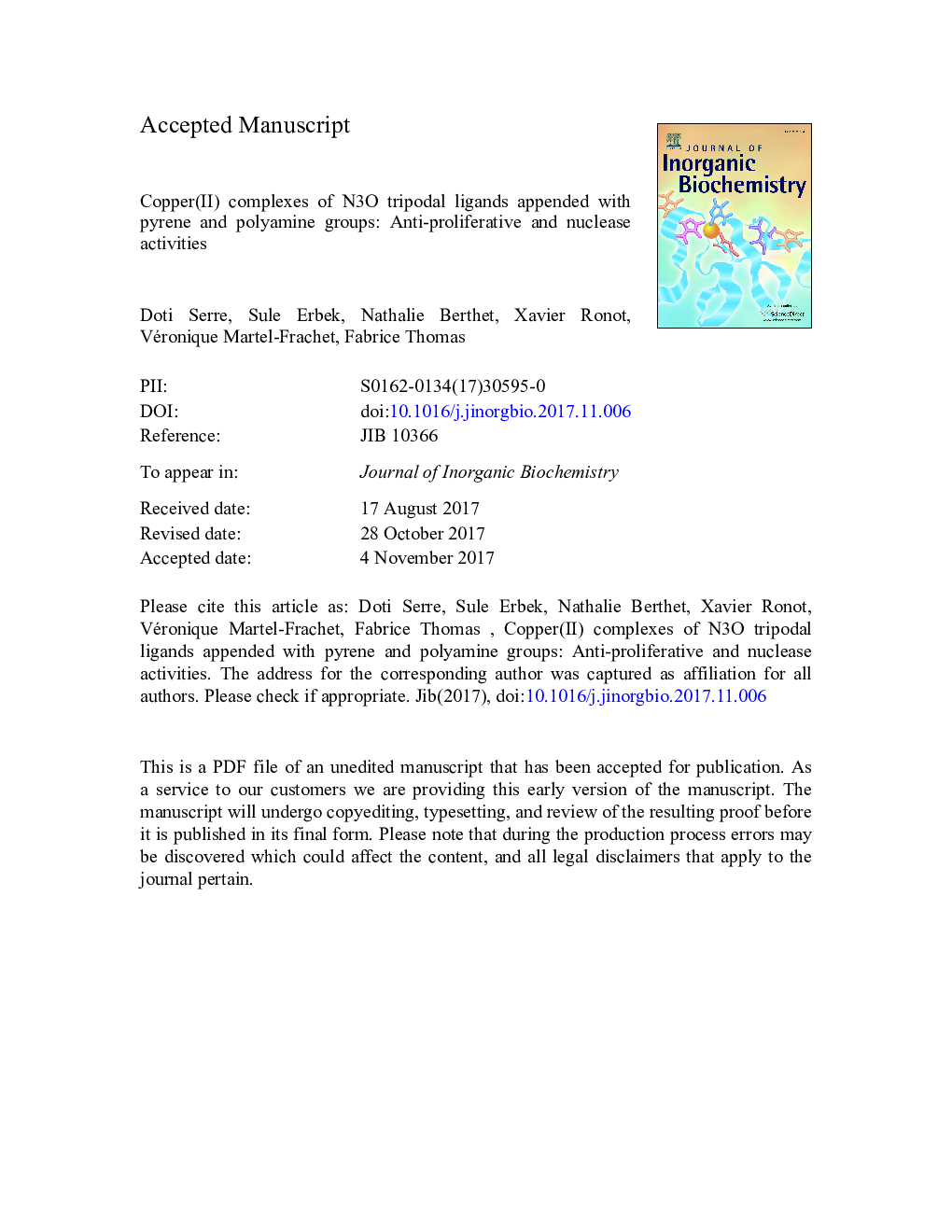| Article ID | Journal | Published Year | Pages | File Type |
|---|---|---|---|---|
| 7754203 | Journal of Inorganic Biochemistry | 2018 | 59 Pages |
Abstract
The pyrene and polyamine groups enhance the affinity of the copper complexes towards DNA. The complexes exhibit a high nuclease activity in the presence of reductant, and show a much greater anti-proliferative activity than cis-platin towards bladder cancer cells.99
Keywords
BOCHR-MSQ-TOFFCSRPMITBETD-DFTEtBrESI-MSNTOSCEFITCtert-butyloxycarbonylDMFCT DNAPBSDMEMcalf thymus deoxyribonucleic acidLinear DNAnuclear magnetic resonance3-(4,5-dimethylthiazol-2-yl)-2,5-diphenyltetrazolium bromideDFTDMSOSupercoiled DNADNADulbecco's modified Eagle's mediumMTTN,N-dimethylformamideUV–visibleUV–Visethidium bromideEDTAethylene diamine tetraacetic acidElectrospray Ionization Mass Spectrometrydeoxyribonucleic acidSaturated Calomel ElectrodeCharge transferNucleaseNMREPRElectron paramagnetic resonanceDimethylsulfoxidequadrupole time-of-flightfetal calf serumAnti-tumorHigh resolution mass spectrometryResistance factorPhosphate buffered salinefluorescein isothiocyanatePhenolTripodal ligandRoswell Park Memorial InstituteCopperDensity functional theoryTime-dependent density functional theoryCyclic voltammetryPropidium iodide
Related Topics
Physical Sciences and Engineering
Chemistry
Inorganic Chemistry
Authors
Doti Serre, Sule Erbek, Nathalie Berthet, Xavier Ronot, Véronique Martel-Frachet, Fabrice Thomas,
